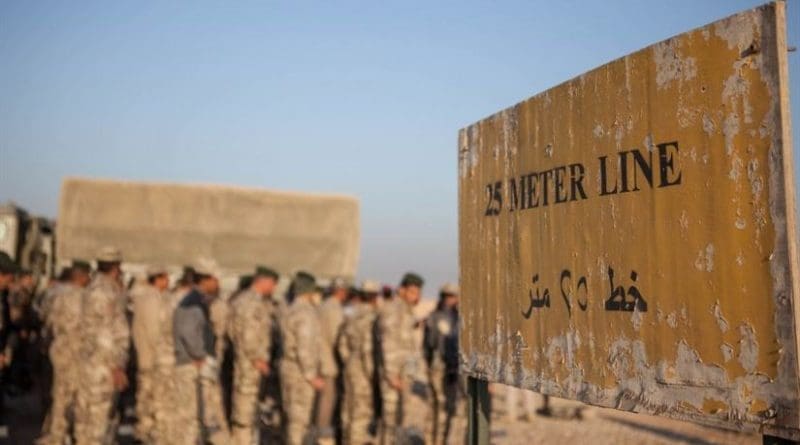Counter-Islamic State Forces Moving To Liberate Mosul, Raqqa
By DoD News
By Terri Moon Cronk
The Defense Department believes the Islamic State of Iraq and the Levant’s days are numbered in Iraq’s second-largest city of Mosul, Pentagon spokesman Navy Capt. Jeff Davis said Monday.
Iraqi security forces prepare to zero their M16 rifles at the
Davis said it’s significant that counter-ISIL forces have reached the Tigris River and converged on the three axes from which the Iraqi security forces approached Mosul — north, east and southeast — and gained control of the eastern end of Mosul. Since Jan. 7, Iraqi security forces have continued to gain territory and consolidate those gains, he noted.
ISIL’s Days Are Numbered
“[ISIL fighters] are surrounded on all sides by a superior force they’re facing [in addition to] resistance from within the city, and they’re being bombarded daily by coalition air and artillery strikes,” Davis told reporters. “And [ISIL] has no ability to reinforce or resupply. We do believe their days there, [particularly] in eastern Mosul, are numbered and they are beginning to realize it.”
While friendly forces have pushed their way onto the banks of the Tigris River in the vicinity of the southernmost bridge around Mosul, ISIL fighters over the weekend blew up the last of five bridges, the DoD spokesman said.
“We are now seeing some makeshift attempts to [cross the river on foot] using planks,” Davis said. On another bridge, where the span over land was taken out by coalition forces, ISIL was observed using a crane to move vehicles across the river, one by one in what Davis called a very “painstaking way.”
“We’ve also seen them use slides to take cargo in boxes and slide them down onto the ground from the bridges that have coalition-damaged spans. All five bridges around Mosul are unusable,” he said.
After occupying Al Salam Hospital in southeastern Mosul as a fighting position and storage facility for quite a while, ISIL has been forced out of the facility, Davis said.
ISIL’s Morale Declines
“We’re seeing continued signs of ISIL fighters having loss of morale,” Davis said. “Many of them have not been paid in months; we’ve seen fewer [vehicle-borne homemade bombs] than we had previously in Mosul, and indications are that ISIL can’t respond to coordinated attacks on multiple axes.”
What Operation Inherent Resolve officials have seen as a lull in morale particularly from the east of Mosul are ISIL desertions and fighters leaving their positions, Davis said.
“It’s a sign of the fact that they recognize their defeat is imminent,” he said.
The residents of Mosul are increasingly putting up resistance, Davis added, where people “are very quick to turn against [ISIL] to help drive them out, particularly when [the enemy] is close to taking [territory].”
Situation in Raqqa
In Raqqa, Syria, which ISIL proclaims as its capital in that country, counter-ISIL Syrian forces also are moving in on their axes of approach to retake the city from ISIL control, Davis said.
Coming into Raqqa from two axes, the SDF has cleared most of the northern axis in the north and from the northwest, toward the southern segment of the city, Davis said, adding that the SDF are within four kilometers of the city and the Tabqu Dam on the Euphrates River. He called both achievements “significant in isolating Raqqa.”

